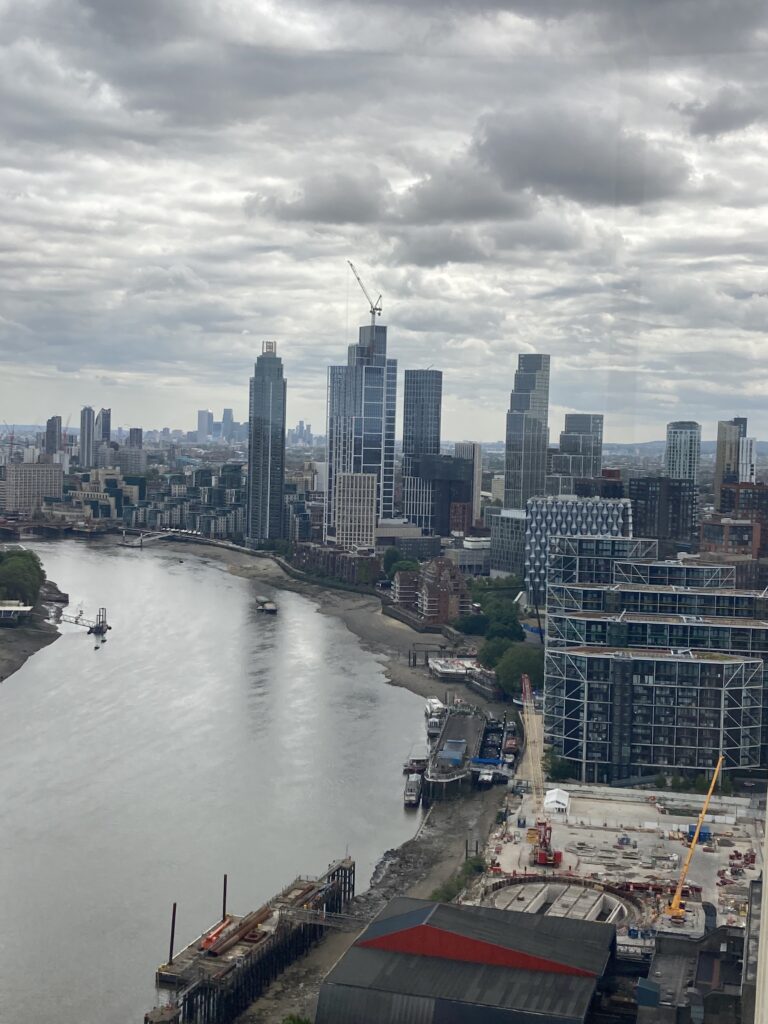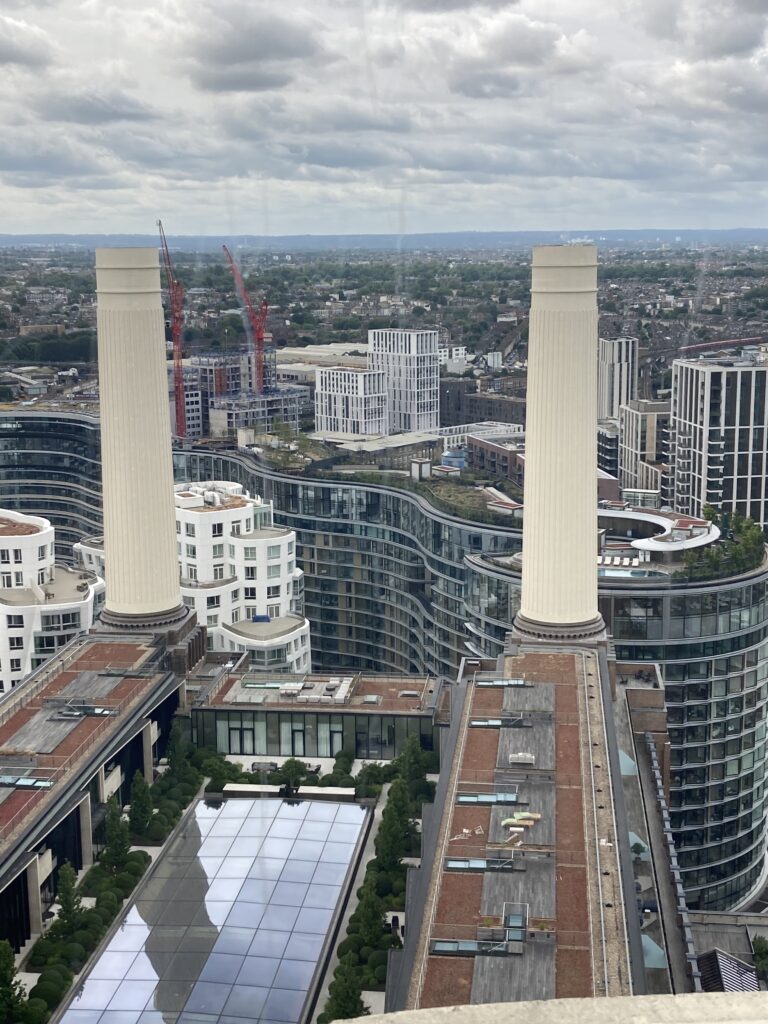The Battersea Power Station was one of London’s most imposing structures in its heyday, which lasted for much of the twentieth century. In the US, and maybe everywhere outside of the UK (and for many people in the UK), it’s most known for its grim, almost fearsome image on the cover of Pink Floyd’s 1977 album Animals. It also has a less high-profile, almost cameo role in classic rock when it can be seen in a shot behind the fictional main character of Quadrophenia in the booklet of photos that accompanied that record.
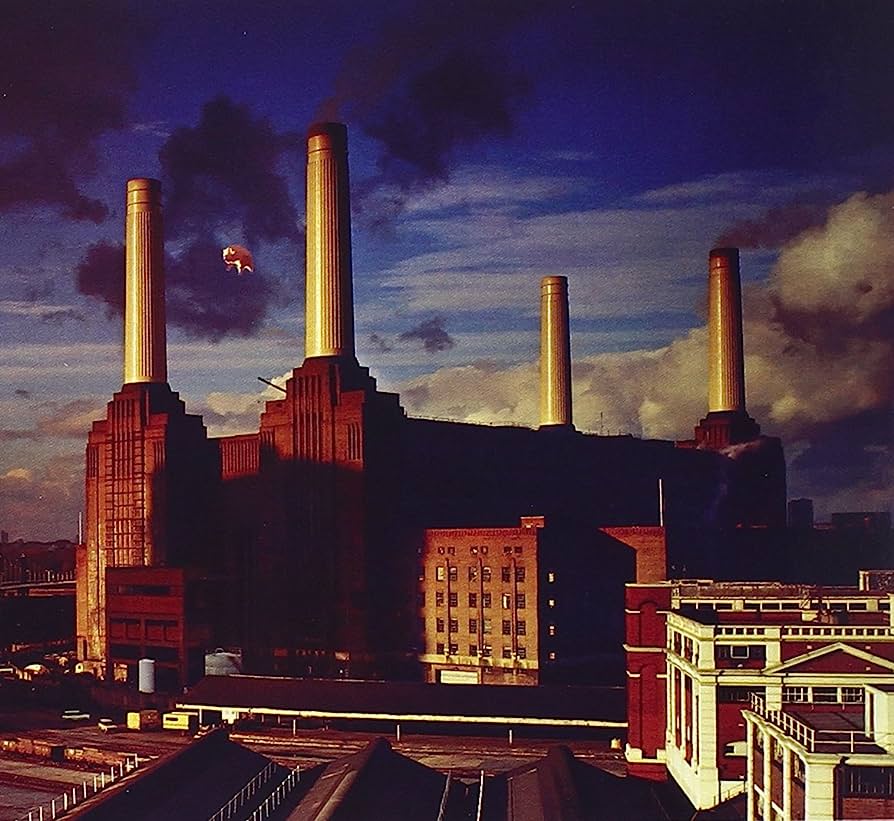
The Battersea Power Station wasn’t just a prop. It did provide a lot of power for the area from around the 1930s through the 1970s, though by the early 1980s it—or more properly, the two stations comprising what was called Battersea Power Station—was closed. The details are pretty technical and not of such great interest to me and, probably, most readers of this blog, though they’re out there if anyone wants them. Basically technological changes had made the station obsolete, but it was so visually striking that many wanted it preserved somehow.
Again the details of how it endured threats to its survival are available, but I think most rock fans, or even general history fans, are more interested in what it’s like today, and what you can see of it if you’re in London. I’ve been to London more than a dozen times, but didn’t actually visit until July 2023, figuring I should check another landmark off my list.
The Battersea Power Station is still there and does look much like it used to, although it’s nothing to do with power anymore. While it probably owes its survival to hopes to preserve it as an architectural landmark, it’s not quite that now. It’s part landmark with one tourist attraction, but more a supermall of sorts, surrounded by almost frighteningly postmodern buildings that I’m guessing are aiming for high-rent residents and businesses.
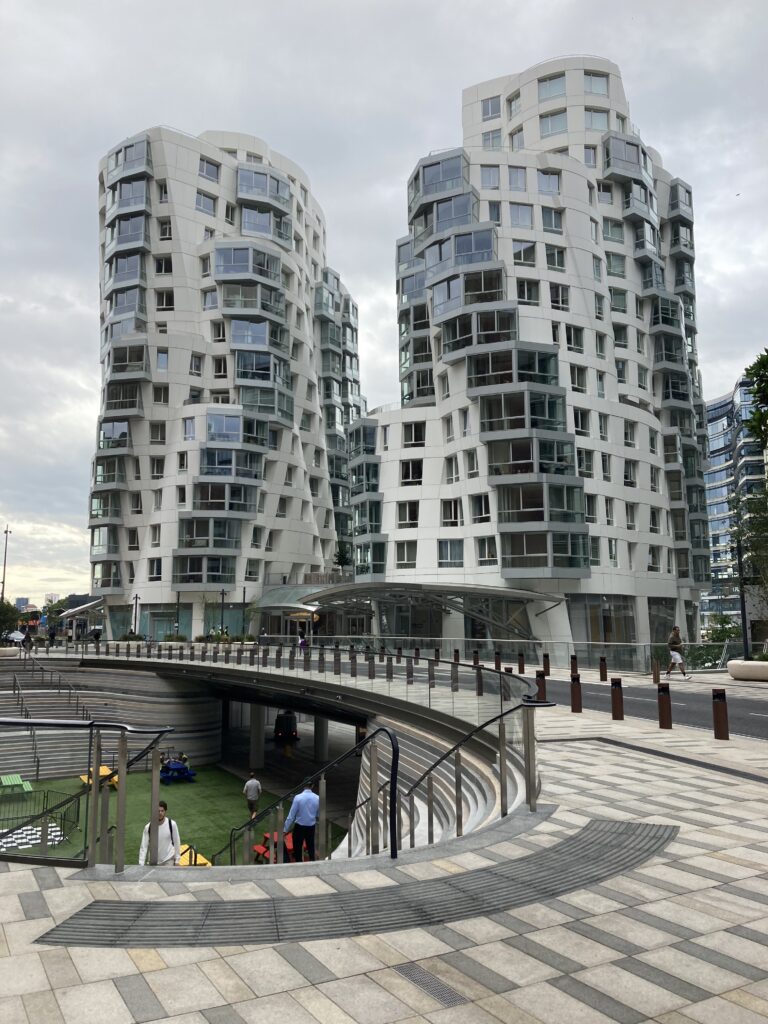
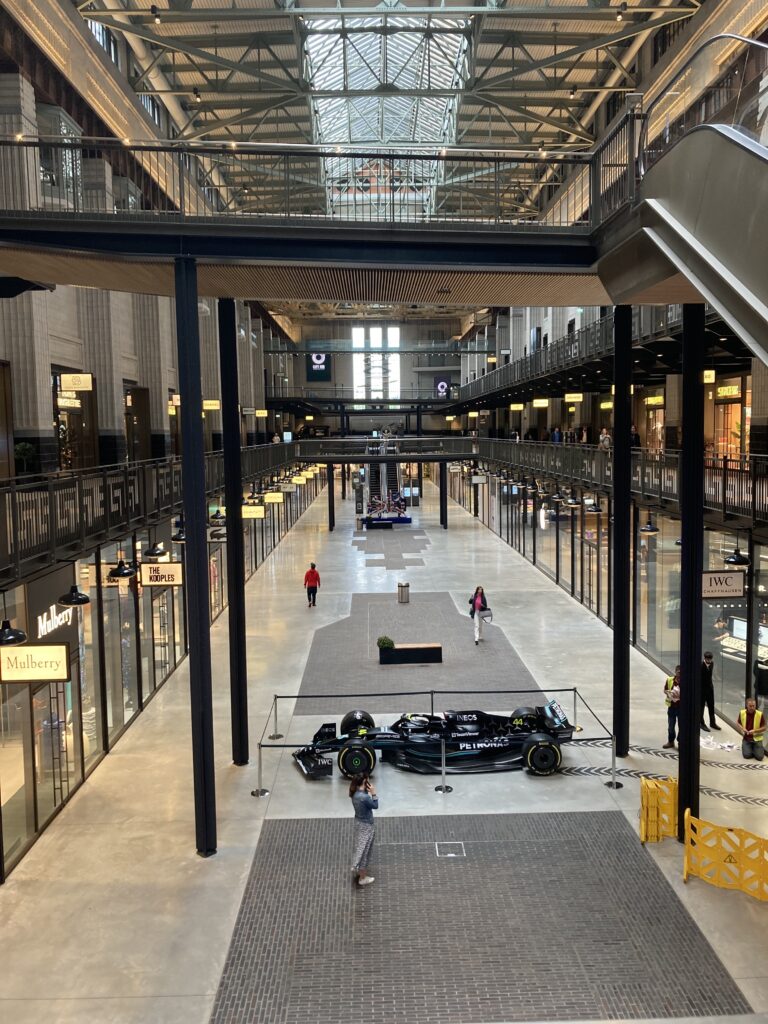
The four chimneys are still there, but the building’s so big you have a hard time fitting them into one photo, let alone make it look like Animals, unless you have a helicopter or some such thing. I just about fit all four in walking out of the nearby Battersea tube/underground station:
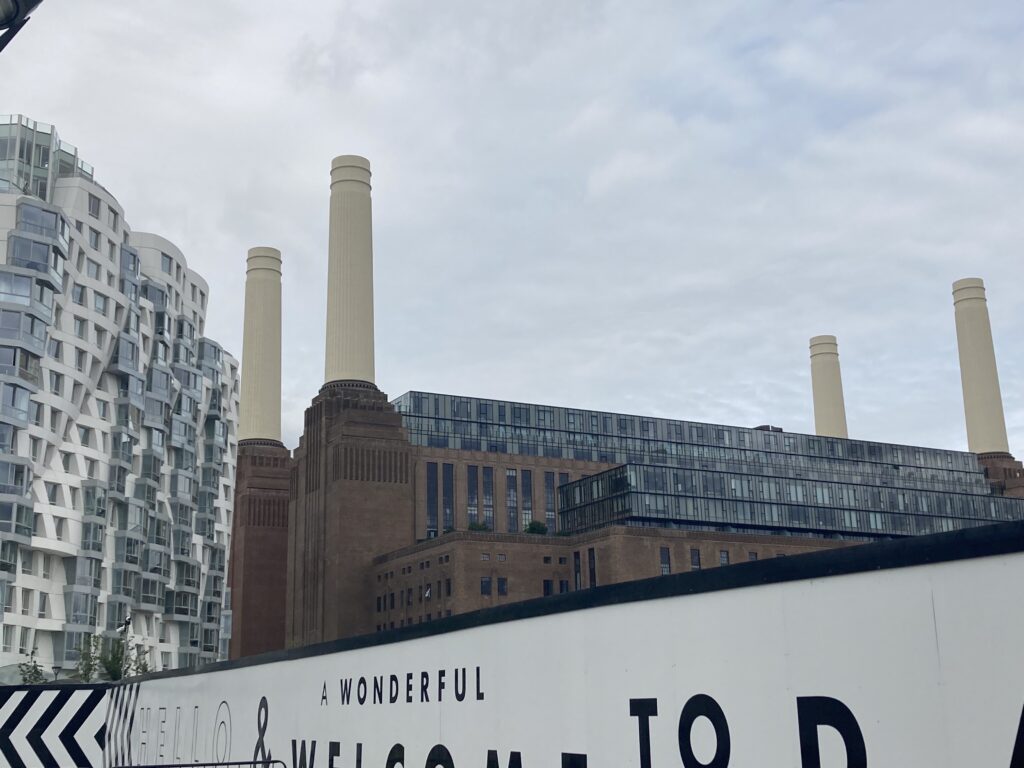
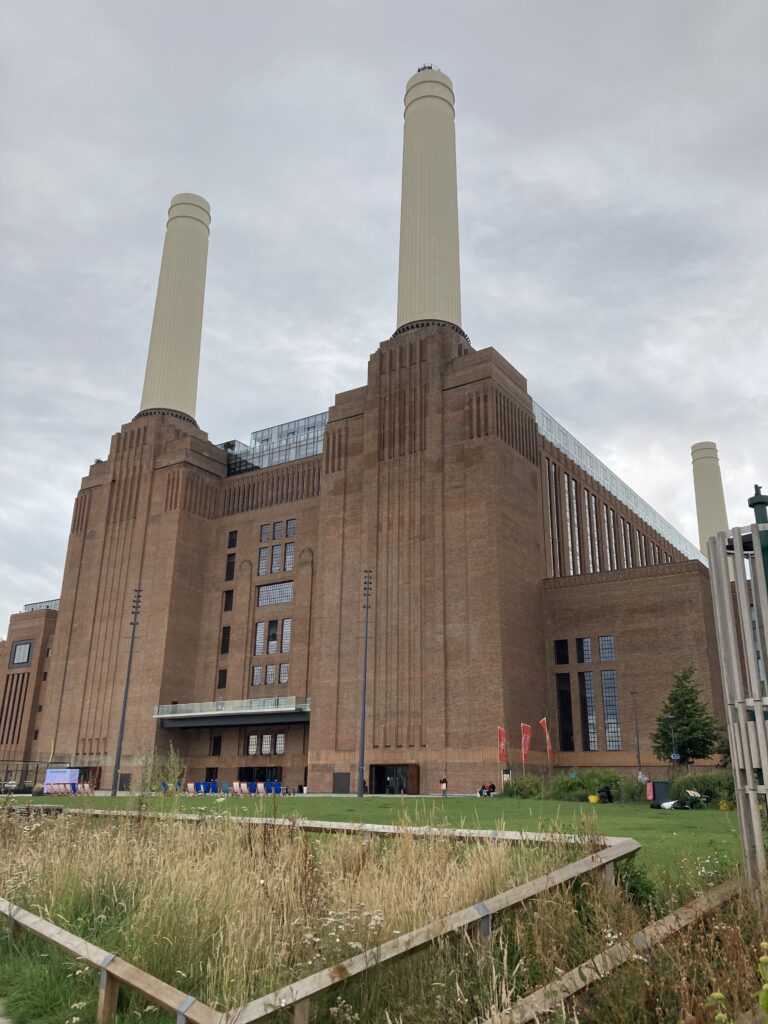
Something you can do that’s more exciting than checking out the mall—full of retailers offering expensive items of no interest to me—or what remains of its vintage architecture is take an elevator to the top of one of the chimneys. Probably most visitors will find the price (just over fifteen pounds, if you reserve a ticket online) not worth the relatively brief ascent and seven minutes you get for a panoramic view at the top. There’s a small display of the history of the power plant while you wait for the ride that probably holds little interest for most visitors.
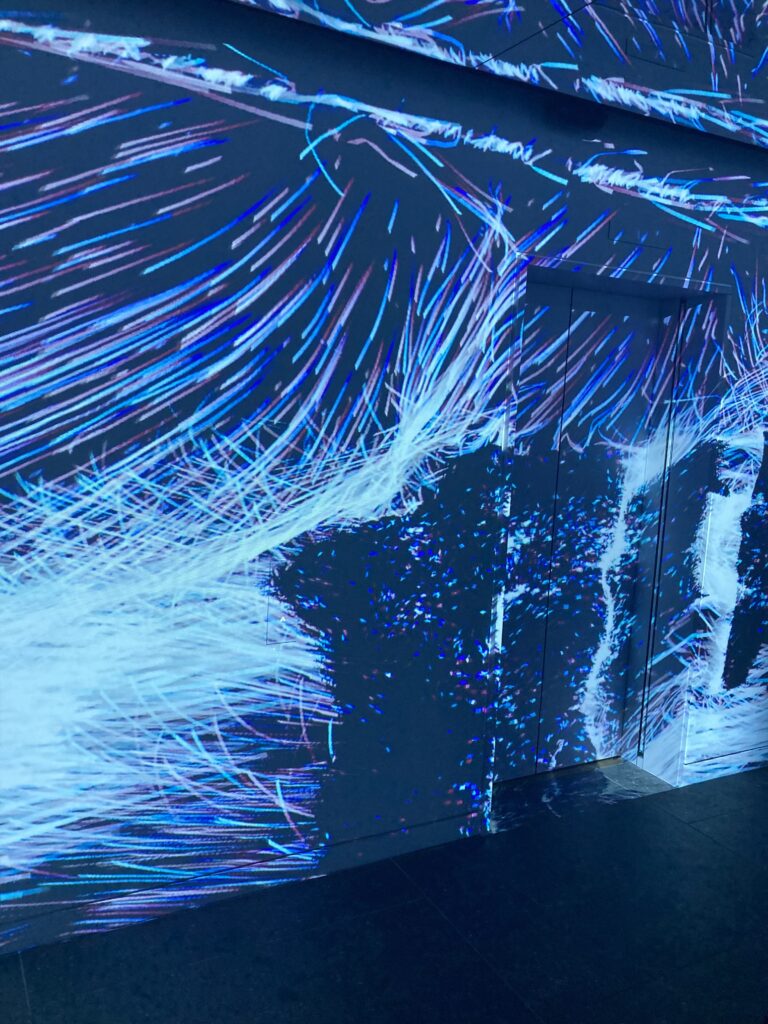
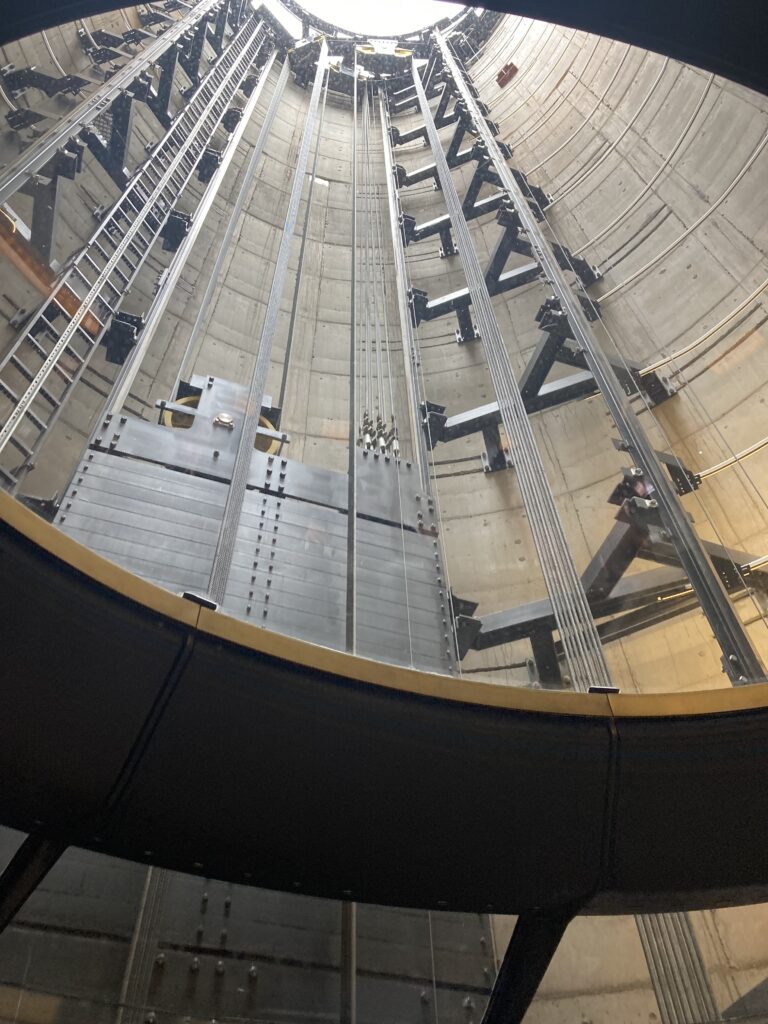
But hey, you’re in London, you’re interested in Pink Floyd and the Who, and why not do it once, even if you might feel better about spending five pounds instead of fifteen pounds. The panoramic view at the top is nice, even if Battersea Power Station isn’t high enough, and London not riddled with enough skyscrapers or scenic hills and water, to compete with panoramic views in the likes of New York and San Francisco.
